The Overview of the Conservation and Renewal of the Industrial Belgian Heritage as a Vector for Cultural Regeneration
Abstract
:1. Introduction
2. State-of-the-Art-Analysis of Industrial Site Reconstruction
2.1. Industrial Site
- With the progress of science and technology and productivity, the social and economic structure has undergone profound changes. Traditional products and industries have been eliminated because they cannot meet the market demand, and factories are forced to stop production and close down.
- The depletion of natural resources, which led to the abandonment of mining and related activities. Industrial land became a heritage because of the cessation of production.
- Industrial pollution and consequences to the soil and groundwater in the plant area in the long-term production. After the relocation of these enterprises, the pollutants left in the factory area cannot be treated for a short time, and the land is no longer suitable for use because of the major threat to human health and has become an industrial heritage.
- The production workshop, warehouse, and ancillary facilities of industrial and mining enterprises. It includes dedicated railway, wharf, and road land, excluding open-pit mining land, which is classified into water area and other lands.
- The storage land: warehouse, stockyard, packaging workshop, and its ancillary facilities of storage enterprises.
- The transportation land: railway, highway, pipeline transportation, port, airport, and other urban external transportation and ancillary facilities.
- The land for municipal public and other facilities and infrastructure.
2.2. The Conservation and Renewal of Industrial Sites
2.3. Industrial Heritage
2.4. The Relationship between the Renewal of Industrial Sites and the Conservation of Industrial Heritage
3. Overview of the Development of the Industrial Heritage in Belgium
3.1. Overview of the Industrial Development in Belgium
3.2. Inspection and Research Institutions for Industrial Heritage
3.3. Industrial Heritage in Belgium
3.3.1. Pre-Industrialization Heritage
3.3.2. Industrialized Period from 1802 to the 1890s
4. Conservation and Renewal of the Industrial Heritage and Its Importance towards the Cultural Regeneration
4.1. An European Overview of Interesting Examples
- Matadero (Madrid, Spain): formerly a slaughter house and meat market inaugurated in 1924 and it remains an interesting architectural reference of industrial’s site transformation in Spain along with a renovation process towards its transformation into parks and promenades. Nowadays, Matadero is dedicated basically to art, design and literature and it accommodates exhibitions of a great variety.
- Wuk (Vienna, Spain): former locomotive factory (in 1855), turned into a cultural place (beginning of the 80s) promoting basically cultural activities with a variety of activities dedicated to contemporary art, etc.
- Kaapeli (Helsinki, Finland): former cable factory and a production site for Nokia Corporation. Today, the site has the function of a multimodal cultural center and accommodates three museums, twelve galleries, theatres, arts schools and other artistic disciplines.
4.2. A Focus in the Case of Belgium
5. Main Findings and Perspectives
- Firstly, the structure of industrial heritage is very clear, each region has its own prominent industrial structure system. In the Walloon region the heavy industrialization and Flanders the textile industry. In Brussels, its service industry. The protection and research of each region are relatively independent. This feature enables each region of Belgium to play its own industrial advantages, resource-intensive, and create the greatest value. At the same time, due to the geographical proximity of each region, the logistics time and cost between them are greatly reduced. They are relatively independent but interdependent. Meanwhile, from the perspective of the whole country, the industrial chain of Belgium is complete and balanced. This is crucial to the development of industry.
- Secondly, despite the Industrial Revolution in Belgium was created followed by the U.K., but there was no leading sector in Belgium that was similar to the textile industry in the U.K. The basic industry in the Walloon region had a much greater decisive role in the change of industrial structure. Therefore, the kinds of industrial heritages in Belgium are mix and balance.
- Thirdly, each successful protection case is protected and updated according to its actual conditions. As a small country in Western Europe, due to the particularity of geopolitics, each region has its characteristics. The industrial allocation and market of Belgium are greatly influenced by the traditional powers around Belgium. The main industry affected by the U.K. in the northwest is the textile industry, the main industry affected by the Netherlands in the northern region is the logistics industry, the main industry affected by Germany in the eastern region is the manufacturing industry, and the main industry affected by France in the southwest region is the mining industry.
- Fourthly, the industrial tourism in Belgium is developed. As mentioned in Section 4, Wallonie has a series of successful cases. From the train museum to the mining park. The industrial tourism not only promotes the development of the surrounding economy but also well preserve the cultural imprint of Belgium’s industrial age, as a vector for cultural regeneration.
6. Conclusions
- Protection does not necessarily require large-scale demolition and reconstruction, and maintaining the status quo is also a protection mode.
- Although the initial stage of industrial development was at the expense of the natural environment. if it was protected by scientific routes. The brownfield can restore an eco-friendly environment.
- Through the protection of industrial heritage, it is also the protection of traditional culture and social memory.
- The Belgian government and research paid deep attention to science education for children and brownfield community reconstruction.
- Industrial heritage tourism is very developed in Belgium, there are great numbers of types of choices for tourists.
- The current situation of Belgian industrial heritage is consistent with the research trend of academic research, which highlights the guiding significance of the leading academic to the actual industry.
- Despite all this, due to its limited territory of land and separated regional situation. The development of industrial heritage has challenges, for instance, limited categories, lack of driving force for development, social and economic development slows down.
Author Contributions
Funding
Informed Consent Statement
Acknowledgments
Conflicts of Interest
Nomenclature
| Acronym/Abbreviation | Explanation |
| TICCIH | The International Committee for the Conservation of the Industrial Heritage |
| MIAT | Dutch: Museum over industrie, arbeid en textiel |
| VVIA | Dutch: Vlaamse Vereeniging voor Industriële Archeologie |
| UNESCO | The United Nations Educational, Scientific and Cultural Organization |
| UCO | French: Union Cotonnière |
| PIWB | French: Patrimoine Industriel Wallonie-Bruxelles |
| ASVI | French: Association pour la Sauvegarde du Chemin de Fer Vicinal á Thuin |
| ERIH | European Route of Industrial Heritage |
Appendix A
| Abbreviation | Online Resources |
|---|---|
| AIA | https://industrial-archaeology.org/ |
| TICCIH Deutsch | https://ticcih.org/germany/ |
| CILAC | https://www.cilac.com/ |
| FIEN | https://www.industrieel-erfgoed.nl/ |
| No. | Name | Type |
|---|---|---|
| 1 | Tour Saint Albert in People-lez-Binche | Coaling |
| 2 | Offices of the Charbonnage du Bois d’Avroy in Liege | - |
| 3 | Blegny-Mine slagging | - |
| 4 | Marcasse coal mine in Wasmes | - |
| 5 | Well N ° 2 of the Anderlues coal mine | - |
| 6 | Decanter cycle of the coal mining of the Fief de Lamberchies in Quaregnon | - |
| 7 | Charbonnages du Gouffre N ° 10 in Châtelineau | - |
| 8 | Charbonnage du Levant in Cuesmes | - |
| 9 | Charbonnage de la Forte-Taille in Montigny-le-Tilleul | - |
| 10 | Dumont-Wauthier lime kiln and circular kiln in Amay | - |
| 11 | Dapsens cement plant in Vaulx | - |
| 12 | Lessines boat loader | - |
| 13 | Martelange slate quarry | - |
| 14 | Former Carsid steel site | Metallurgy |
| 15 | HFB in Ougrée | - |
| 16 | Forges de Clabecq | - |
| 17 | Offices of the Leonard-Gito Factory in Marchiennes-au-Pont | - |
| 18 | Saint-Eloi rolling mill in Thy-le-Château | - |
| 19 | ACEC factory in Herstal | Mechanical, Metal, Electrical and Electronic Construction |
| 20 | Boël factory in La Louvière | - |
| 21 | Kinkempois workshop in Liege | Construction, Servicing And Maintenance of Railway Equipment |
| 22 | Dubois Pottery in Bouffioulx | Pottery |
| 23 | Mirox (Miroiterie) in Marchienne-au-Pont | Glass |
| 24 | Glaverbel in Roux | - |
| 25 | Vanoutryve factory in Mouscron | Textile |
| 26 | La Vesdre factory in Dison | - |
| 27 | Defosses & Fils wool wash house in Dolhain | - |
| 28 | Despa factory in Theux | - |
| 29 | Toulemonde-Destombes spinning mill in Dottignies | - |
| 30 | Bonneterie Dujardin in Leuze-en-Hainaut | - |
| 31 | Le Bon Grain in Morlanwelz | Boulangery, Pastry, Biscuitery, Food Pasta |
| 32 | Brasserie des Alliés in Marchienne-au-Pont | Brassery |
| 33 | Union Brasserie-Malterie in Jumet | - |
| 34 | The Wez plant (Carsid) in Marcinelle | Power Station |
| 35 | The Marchienne Energy Plant | - |
| 36 | The Cockerill SA power station in Seraing | - |
| 37 | The Monceau power station | - |
| 38 | N ° 1 in Seraing | Pumping Station |
| 39 | City of the gunsmiths in Liege | City, Patron House |
| 40 | Bonnier barracks in Grâce-Hollogne | - |
| 41 | Coron of Archies | - |
| 42 | Casino Salvay in Couillet | - |
| 43 | Château Saroléa in Cheratte | - |
| 44 | Hôtel de Biolley in Verviers | - |
| 45 | Château Industriel Léonard-Giot in Marchienne-au-Pont | - |
| 46 | Château Pirmez in Gilly | - |
| 47 | Château Baudoux in Jumet | - |
| Country | Reference |
|---|---|
| The U.K. | Demographic Yearbook—Table 3: Population by sex, rate of population increase, surface area, and density. United Nations Statistics Division. 2012. Retrieved 9 August 2015. |
| Belgium | “be.STAT”. Bestat.statbel.fgov.be. 26 November 2019. |
| France | Economic, social and territorial situation of France—La Réunion |
| The Netherlands | Netherlands Country/Territory Profile | CAPA |
| Germany | “Germany”. CIA World Factbook. Archived from the original on 11 February 2016. Retrieved 29 March 2020. |
| Italy | Italy: total area of by region 2017 | Statista |
| Spain | Spain Country/Territory Profile | CAPA |
| Portugal | Economic, social and territorial situation of Portugal |
References
- Antrop, M. Why landscapes of the past are important for the future. Landsc. Urban Plan. 2005, 70, 21–34. [Google Scholar] [CrossRef]
- Loures, L.; Panagopoulos, T. Recovering derelict industrial landscapes in Portugal: Past interventions and future perspectives. In Proceedings of the International Conference on Energy, Environment, Ecosystems & Sustainable Development, Agios Nikolaos, Greece, 24–26 July 2007; pp. 116–121. [Google Scholar]
- Vogt, K.C. The post-industrial society: From utopia to ideology. Work Employ. Soc. 2016, 30, 366–376. [Google Scholar] [CrossRef]
- Inglehart, R. Culture Shift in Advanced Industrial Society; Princeton University Press: Princeton, NJ, USA, 2018. [Google Scholar]
- Zacharopoulou, G. Diachronic exploitation of landscape resources-tangible and intangible industrial heritage and their synthesis suspended step. In Proceedings of the XVIth International TICCIH Congress, Lille, France, 6–11 September 2015. [Google Scholar]
- Andrei, R. Industrial building conversion-The Poaching of an already poached reality. Bul. Inst. Politeh. Din Lasi. Sect. Constr. Arhit. 2012, 58, 157. [Google Scholar]
- Gao, J.; Chen, W.; Yuan, F. Spatial restructuring and the logic of industrial land redevelopment in urban China: I. Theoretical considerations. Land Use Policy 2017, 68, 604–613. [Google Scholar] [CrossRef]
- Zhang, L.; Yue, W.; Liu, Y.; Fan, P.; Wei, Y.D. Suburban industrial land development in transitional China: Spatial restructuring and determinants. Cities 2018, 78, 96–107. [Google Scholar] [CrossRef]
- Glumac, B.; Decoville, A. Brownfield Redevelopment Challenges: A Luxembourg Example. J. Urban Plan. Dev. 2020, 146, 05020001-1-9. [Google Scholar] [CrossRef]
- Yang, Z. Study of Landscape Architecture on Industrial Sites Redeveloping; Beijing Forestry University: Beijing, China, 2015. [Google Scholar]
- Newton, P.; Thomson, G. Chapter 15 Urban Regeneration in Australia. In Urban Regeneration; SAGE Publications Ltd.: Thousand Oaks, CA, USA, 2016; pp. 288–313. [Google Scholar] [CrossRef]
- Ferm, J.; Jones, E. Beyond the post-industrial city: Valuing and planning for industry in London. Urban Stud. 2017, 54, 3380–3398. [Google Scholar] [CrossRef]
- Wang, J.; Lin, Y.; Glendinning, A.; Xu, Y. Land-use changes and land policies evolution in China’s urbanization processes. Land Use Policy 2018, 75, 375–387. [Google Scholar] [CrossRef]
- Douet, J. Industrial Heritage Re-Tooled: The TICCIH Guide to Industrial Heritage Conservation; Left Coast Press: Walnut Creek, CA, USA, 2013. [Google Scholar]
- TICCIH. The Nizhny Tagil Charter for the industrial heritage. In Proceedings of the TICCIH XII International Congress, Moscaw, Russia, 10–14 July 2003; pp. 169–175. [Google Scholar]
- Cossons, N. Why preserve the industrial heritage. In Industrial Heritage Re-Tooled: The TICCIH Guide to Industrial Heritage Conservation; Left Coast Press: Walnut Creek, CA, USA, 2012; pp. 6–16. [Google Scholar]
- Landorf, C. A framework for sustainable heritage management: A study of UK industrial heritage sites. Int. J. Herit. Stud. 2009, 15, 494–510. [Google Scholar] [CrossRef]
- Ćopić, S.; ĐorđevićA, J.; Lukić, T.; Stojanović, V.; Đukičin, S.; Besermenji, S.; Stamenković, I.; Tumarić, A. Transformation of industrial heritage: An example of tourism industry development in the Ruhr area (Germany). Geogr. Pannonica 2014, 18, 43–50. [Google Scholar] [CrossRef] [Green Version]
- Dai, D.-x. Language of Post-industrial Landscape: Analysis of the Core Area Landscape Design in the Energy-Saving & Environment-friendly Park of Baoshan, Shanghai. Chin. Landsc. Archit. 2011, 8, 8–12. [Google Scholar]
- Dhondt, J.; Bruwier, M. The Industrial Revolution in the Low Countries 1700–1914. In The Emergence of Industrial-1 The Fontana Economic History of Europe; Fontana Publisher: Roermond, The Netherlands, 1973. [Google Scholar]
- Guoxue, F. On the industrial revolution in Belgium in the 19th century. J. Anhui Univ. 2004, 31–36. Available online: https://kns.cnki.net/kcms/detail/detail.aspx?dbcode=CJFD&dbname=CJFD2004&filename=ADZS200402005&v=unxC0DyvvaJo3v4hKrmPvvtqTDMZm9PCmd7eHNGNyY1HcjhD8SvizoizOf5zassU (accessed on 25 May 2020).
- Vander Stichele, A.; Januarius, J.; Vereenooghe, T.; Debo, R.; De Vooght, D. Industrial Heritage in Flanders (Belgium): Public Perception and Participation Rates. Available online: http://www.academia.edu/download/41039469/paper_TICCIH.pdf (accessed on 11 August 2020).
- Alter, G. Work and income in the family economy: Belgium, 1853 and 1891. J. Interdiscip. Hist. 1984, 15, 255–276. [Google Scholar] [CrossRef]
- Galindo, G. How 200 Years of Industry Shaped Belgium’s Identity. Available online: https://www.brusselstimes.com/news/eu-affairs/139811/europol-takes-europe-wide-action-against-online-hate-speech/ (accessed on 15 July 2020).
- Van den Abeelen, G. Industrial Archeology; The Federation of Belgian Enterprises: Burssels, Belgium, 1973. [Google Scholar]
- Alfrey, J.; Putnam, T. The Industrial Heritage: Managing Resources and Uses; Routledge: Abingdon, UK, 2003. [Google Scholar]
- lubeckett, R. History of Industrialization; Shanghai Translation Press: Shanghai, China, 1983; Volume 2. [Google Scholar]
- Cenci, J. From factory to symbol: Identity and resilience in the reuse of abandoned industrial sites of Belgium. Hist. Environ. Policy Pract. 2018, 9, 158–174. [Google Scholar] [CrossRef]
- Patrimoine Industriel Wallonie-Bruxelles; Genicot, L.-F.; Hendrickx, J.-P. Wallonie-Bruxelles: Berceau de L’Industrie sur le Continent Européen; Patrimoine Industriel Wallonie-Bruxelles: Charleroi-Marcinelle, Belgium, 1990. [Google Scholar]
- Loures, L. Industrial Heritage: The past in the future of the city. WSEAS Trans. Environ. Dev. 2008, 4, 687–696. [Google Scholar]
- Tandy, C. Industria y Paisaje; Instituto de Estudios de Administración Local: Madrid, Spain, 1979. [Google Scholar]
- Borsi, F. Le Paysage de L’Industrie; Archives d’Architecture Moderne: Bruxelles, Belgium, 1975. [Google Scholar]
- Meinig, D.W. The Interpretation of Ordinary Landscapes: Geographical Essays; Oxford University Press: New York, NY, USA, 1979. [Google Scholar]
- Lusiani, M.; Zan, L.; Swensen, G.; Stenbro, R. Urban planning and industrial heritage—A Norwegian case study. J. Cult. Herit. Manag. Sustain. Dev. 2013, 3, 175–190. [Google Scholar] [CrossRef]
- Hospers, G.-J. Industrial heritage tourism and regional restructuring in the European Union. Eur. Plan. Stud. 2002, 10, 397–404. [Google Scholar] [CrossRef]
- First Transformations and Expansion (18th Century). Available online: https://www.econstor.eu/bitstream/10419/193995/1/978-90-485-4448-6.pdf (accessed on 15 December 2020).
- Abad, C.J.P.; Pino, J.M. Conservation, management and tourist use of pre-industrial heritage. Identification of Spanish experiences from a territorial analysis. J. Tour. Hosp. Manag. 2015, 3, 1–22. Available online: http://jthmnet.com/vol-3-no-1-june-2015-abstract-1-jthm (accessed on 1 June 2020). [CrossRef] [Green Version]
- On the Industrial History of Belgium. European Route of Industrial Heritage. Available online: https://www.erih.net/how-it-started/industrial-history-of-european-countries/belgium (accessed on 7 June 2020).
- Munsters, W. Cultural tourism in Belgium. In Cultural Tourism in Europe; CAB International: Wallingford, UK, 1996; pp. 109–126. [Google Scholar]
- Boussauw, K. City profile: Ghent, Belgium. Cities 2014, 40, 32–43. [Google Scholar] [CrossRef] [Green Version]
- Shiyan, H. Overall of the beer industry in Belgium. Liquor-Mak. Sci. Technol. 1996, 1, 65. [Google Scholar]
- Jacobs, S.; Notteboom, B. Photography and the spatial transformations of Ghent, 1840–1914. J. Urban Hist. 2018, 44, 203–218. [Google Scholar] [CrossRef]
- Winter, A. Migrants and Urban Change: Newcomers to Antwerp, 1760–1860; Routledge: Abingdon, UK, 2015. [Google Scholar]
- Loyen, R.; Buyst, E.; Devos, G. Struggling for Leadership: Antwerp-Rotterdam Port Competition Between 1870–2000; Springer Science & Business Media: Berlin, Germany, 2012. [Google Scholar]
- Eichengreen, B. 2 Institutions and economic growth: Europe after World War II. In Economic Growth in Europe since 1945; Cambridge University Press: Cambridge, UK, 1996; pp. 38–72. [Google Scholar]
- A Second Life for Industrial Heritage Sites in EUROPE; ASEF Culture360: Singapore, 2015.
- Bernard Lane. Industrial Heritage and_AgriRural Tourism in Europe a Review of Their Development Socio-Economic Systems and Future Policy Issues. Available online: https://www.europarl.europa.eu/RegData/etudes/etudes/join/2013/495840/IPOL-TRAN_ET(2013)495840_EN.pdf (accessed on 7 June 2020).
- Wikipedia. ASVi Museum—Tramway Historique Lobbes-Thuin. Available online: https://en.wikipedia.og/wiki/ASVi_museum (accessed on 5 June 2020).
- Lintsen, H.; Steenaard, R. Steam and Polders. Belgium and the Netherlands, 1790–1850. Tractrix Yearb. Hist. Sci. Med. Technol. Math. 1991, 3, 121–147. [Google Scholar]
- Teich, M.; Porter, R.; Gustafsson, B. The Industrial Revolution in National Context: Europe and the USA; Cambridge University Press: Cambridge, UK, 1996. [Google Scholar]
- Lemoine, G. Development of germignies-nord slag heap (north), and the preservation of its fauna, flora and habitats by extensive grazing. Bull. Soc. Bot. N. Fr. 2011, 64, 17–26. [Google Scholar]
- Melin, H. Loos-en-Gohelle, du noir au vert. Multitudes 2013, 52, 59–67. [Google Scholar] [CrossRef]
- Zhang, J.; Cenci, J.; Becue, V.; Koutra, S.; Ioakimidis, C.S. Recent evolution of research on industrial heritage in Western Europe and China based on bibliometric analysis. Sustainability 2020, 12, 5348. [Google Scholar] [CrossRef]
- Nyns, S.; Bedoret, J.; Crespin-Noël, E.; Saint-Viteux, F. Le site du Gosson, de la friche minière à un parc urbain et pédagogique nature admise? In Les Friches Minières: Paysage Culturel et Enjeu de Développement Rural. Regards Croisés Entre Bucovine et Wallonie; Atelier des Presses: Liège, Belgium, 2017; pp. 161–183. [Google Scholar]
- Blegnymine.be. Available online: https://www.blegnymine.be/en/multimedia/coal-mine (accessed on 29 June 2020).
- Persson, K.G.; Sharp, P. An Economic History of Europe; Cambridge University Press: Cambridge, UK, 2015. [Google Scholar]
- Foreman-Peck, J.S. Natural monopoly and railway policy in the nineteenth century. Oxf. Econ. Pap. 1987, 39, 699–718. [Google Scholar] [CrossRef]
- Reclus, E.; Keane, A.H.; Ravenstein, E.G. The Universal Geography; J.S. Virtue & Co Ltd.: London, UK, 1850. [Google Scholar]
- Espion, B.; Engels, R.; Provost, M. Civil engineering heritage: Country profile–Belgium. Proc. Inst. Civ. Eng. Eng. Hist. Herit. 2017, 170, 197–205. [Google Scholar] [CrossRef]
- Mathys, C. Economic Importance of the Belgian Ports: Flemish Maritime Ports, Liège Port Complex and the Port of Brussels—Report 2007; National Bank of Belgium Working Paper; National Bank of Belgium: Brussels, Belgium, 2009. [Google Scholar]



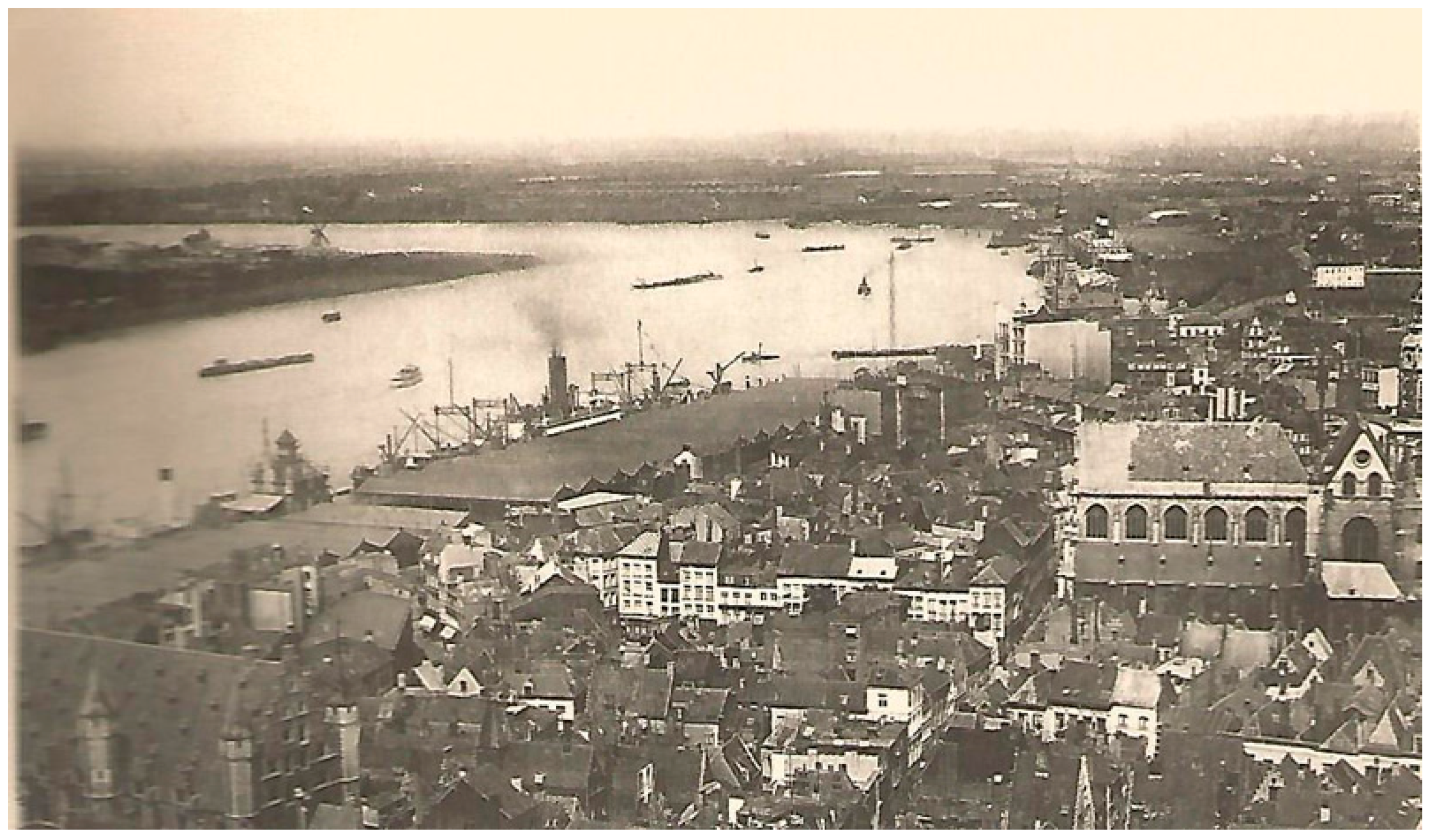







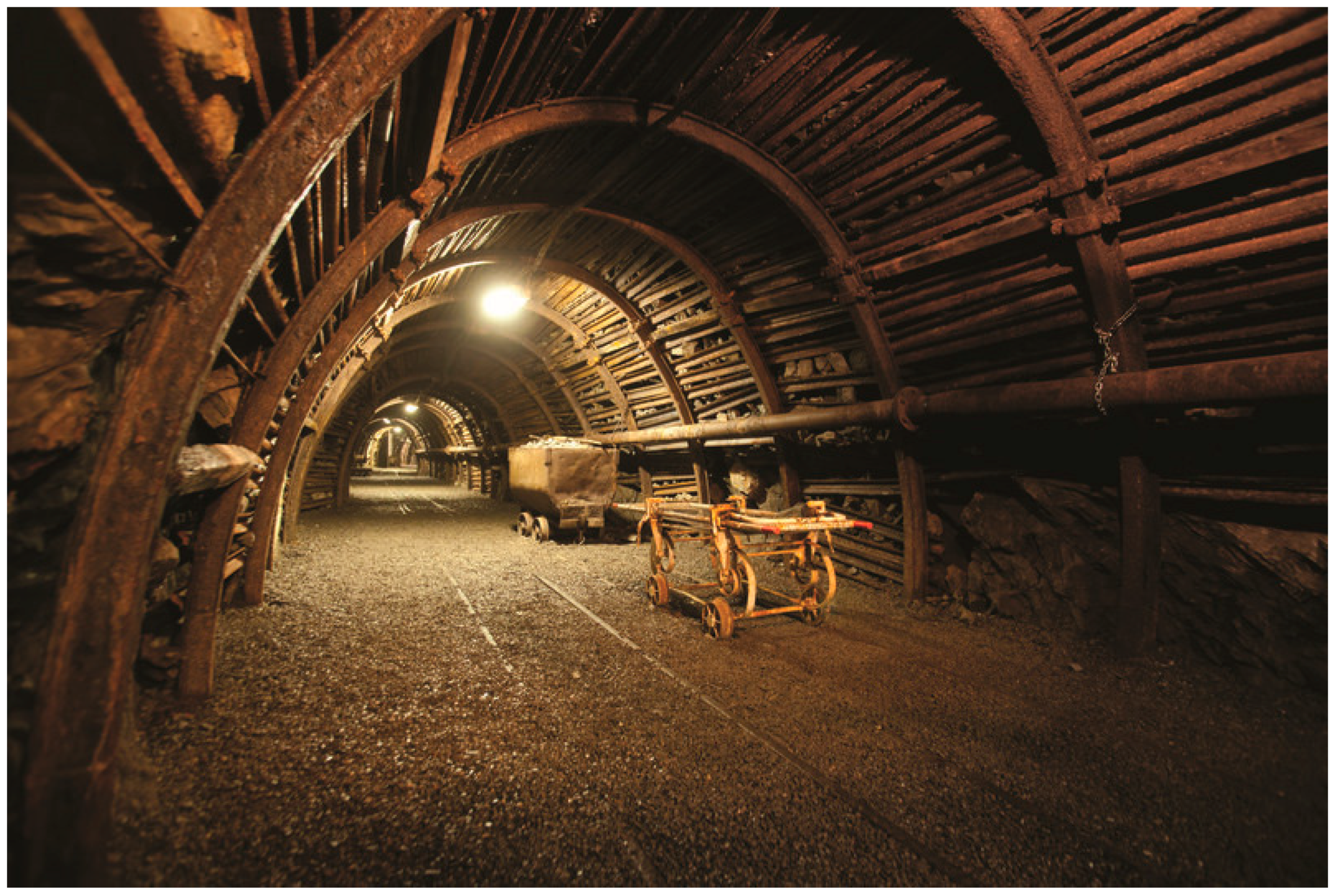



| District | City a | Field b | Representative Industry |
|---|---|---|---|
| Liege | Verviers | Industry promotion | Machinery |
| Charleroi | Mons | Industry promotion | Coal |
| - | Ghent | Industry promotion | Textile |
| - | Antwerp | Service | Port |
| - | Brussels | Service | Capital |
| Location | Organization | Abbreviation a | Established Time a |
|---|---|---|---|
| The U.K. | Association for Industrial Archaeology | AIA | 1973 |
| German | The International Committee for the Conservation of the Industrial Heritage Deutsch | TICCIH Deutsch | 1978 |
| France | Le Comité d’information et de liaison pour l’archéologie, l’étude et la mise en valeur du patrimoine industriel | CILAC | 1979 |
| The Netherlands | Federatie Industrieel Erfgoed Nederland | FIEN | 1984 |
| Heritage Category |
|---|
| Industry and War |
| Iron and Steel |
| Landscape |
| Mining |
| Production and Manufacturing |
| Water |
| Communication |
| Textiles |
| Service and Leisure Industry |
| Paper |
| Transport |
| Industrial Heritage | Description | Illustration |
|---|---|---|
| Blégny Mine | Located between Liège and Maastricht, Blegny-Mine is one of the four authentic coal mines in Europe with underground galleries accessible for the visitors through the original shaft |  |
| Museum Plantin-Moretus | The world’s oldest surviving printing works is a work of art in itself | 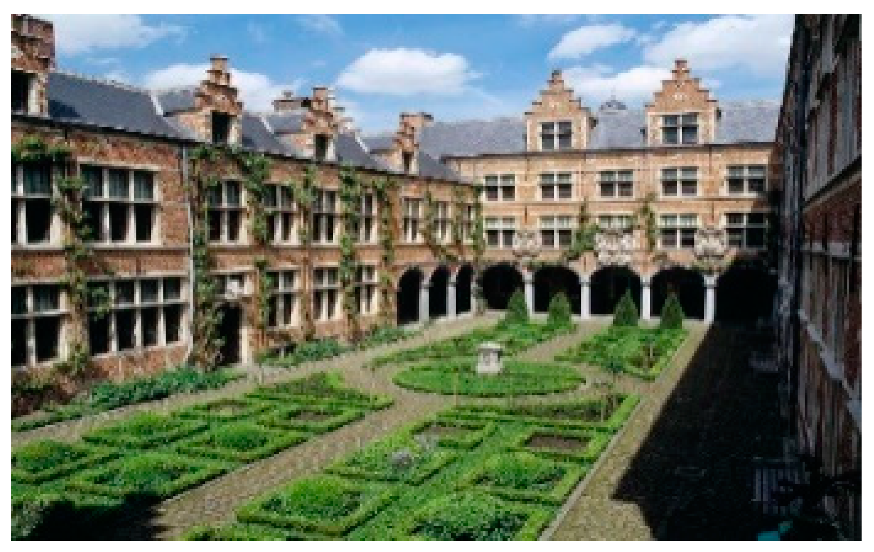 |
| Val St-Lambert | The Belgian glassware that took the world by storm a century ago | 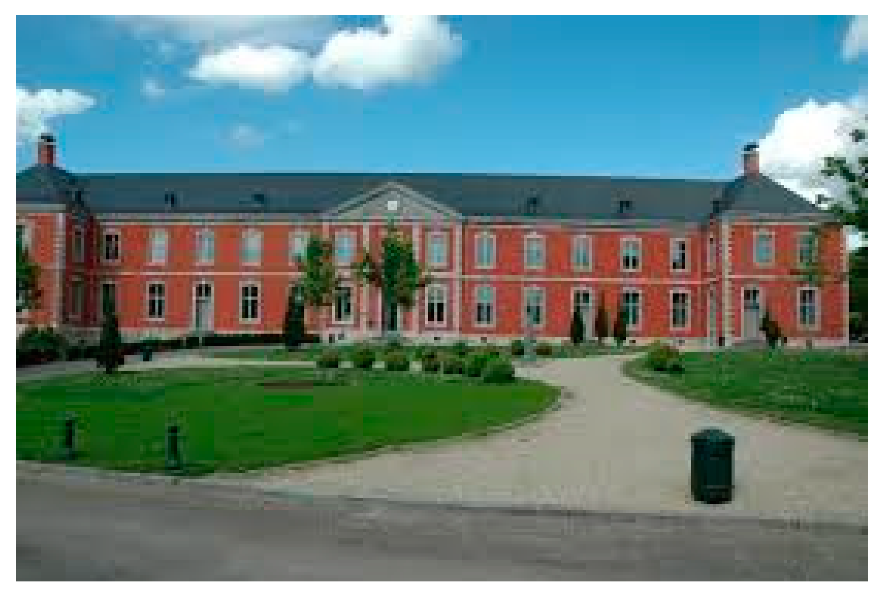 |
| Speelkaartmuseum | The huge scale of machines once required to make playing cards | 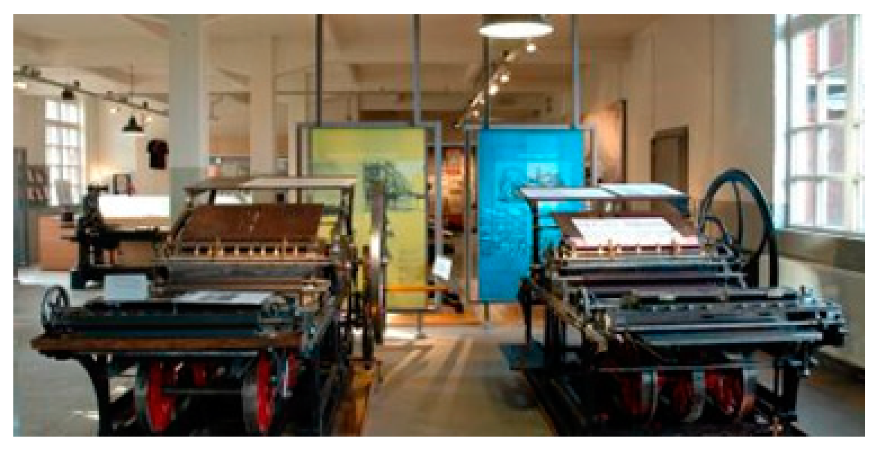 |
| Le Bois du Cazier | A slag heap in archetypal post-industrial Charleroi | 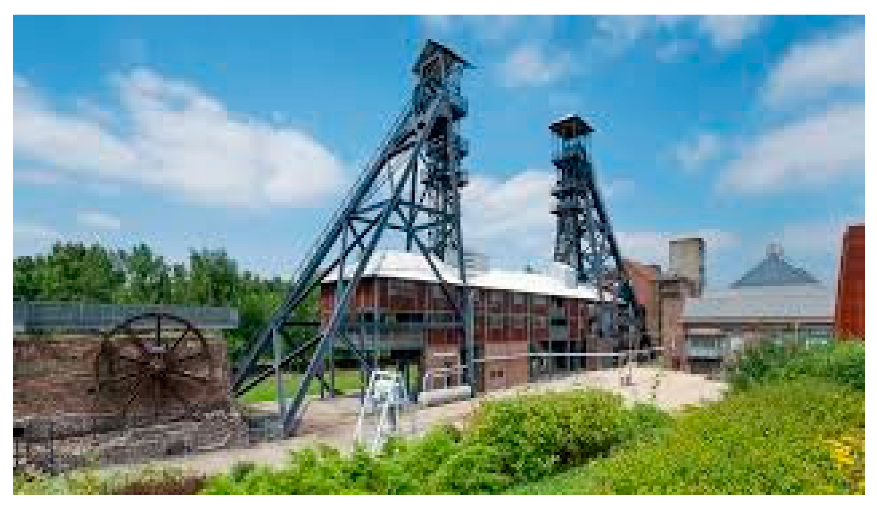 |
| Canals of the Borinage | Remarkable ship-lifts, old and new | 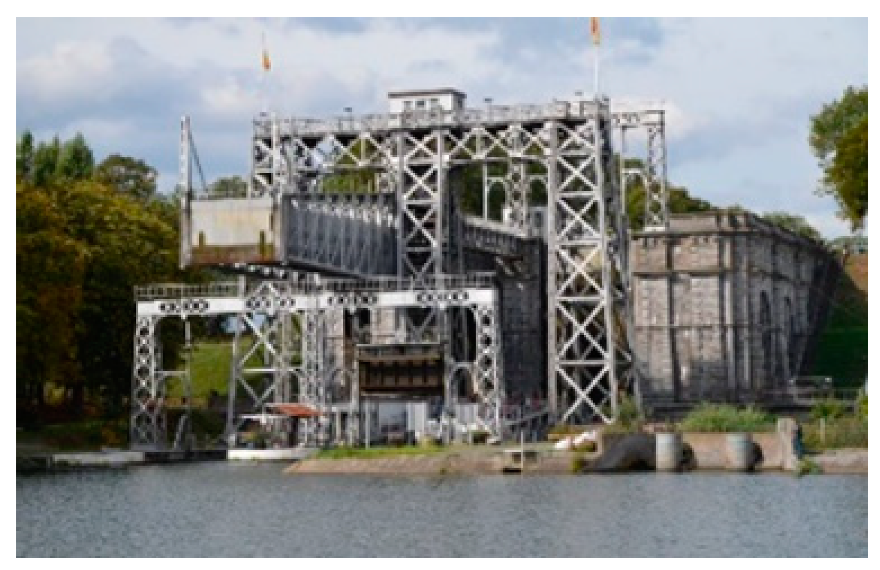 |
| Centre Touristique de la Laine et de la Mode | A fascinating textile museum |  |
| Ranking | Country | Case | Area of the Territory (km2) | Case Density (Case/km2) |
|---|---|---|---|---|
| 1 | Belgium | 68 | 30,528 | 0.00222 |
| 2 | The Netherlands | 66 | 41,865 | 0.00157 |
| 3 | The U.K. | 380 | 244,100 | 0.00155 |
| 4 | Germany | 375 | 357,022 | 0.00105 |
| 5 | Portugal | 37 | 92,212 | 0.00040 |
| 6 | Italy | 105 | 301,333 | 0.00034 |
| 7 | France | 146 | 672,834 | 0.00021 |
| 8 | Spain | 102 | 506,000 | 0.00020 |
| Name | City | Date of Construction | Category |
|---|---|---|---|
| Central Station | Antwerp | 1886 | Railway station |
| Tour et Taxis | Brussels | 1907 | Transport center |
| The Strépy-Thieu Giant Boat Lift | Le Roeulx | 1950 | Boatlift |
| Ronquieres inclined plane | Ronquieres | 1960 | Inclined plane |
| Tram museum | Schepdaal | 1962 | Tram museum |
| Canal du Centre | Thieu | 1885 | Boatlift |
| Tramway Historique Lobbes-Thuin | Thieu | 1890 | Tramway |
Publisher’s Note: MDPI stays neutral with regard to jurisdictional claims in published maps and institutional affiliations. |
© 2021 by the authors. Licensee MDPI, Basel, Switzerland. This article is an open access article distributed under the terms and conditions of the Creative Commons Attribution (CC BY) license (http://creativecommons.org/licenses/by/4.0/).
Share and Cite
Zhang, J.; Cenci, J.; Becue, V.; Koutra, S. The Overview of the Conservation and Renewal of the Industrial Belgian Heritage as a Vector for Cultural Regeneration. Information 2021, 12, 27. https://doi.org/10.3390/info12010027
Zhang J, Cenci J, Becue V, Koutra S. The Overview of the Conservation and Renewal of the Industrial Belgian Heritage as a Vector for Cultural Regeneration. Information. 2021; 12(1):27. https://doi.org/10.3390/info12010027
Chicago/Turabian StyleZhang, Jiazhen, Jeremy Cenci, Vincent Becue, and Sesil Koutra. 2021. "The Overview of the Conservation and Renewal of the Industrial Belgian Heritage as a Vector for Cultural Regeneration" Information 12, no. 1: 27. https://doi.org/10.3390/info12010027
APA StyleZhang, J., Cenci, J., Becue, V., & Koutra, S. (2021). The Overview of the Conservation and Renewal of the Industrial Belgian Heritage as a Vector for Cultural Regeneration. Information, 12(1), 27. https://doi.org/10.3390/info12010027







